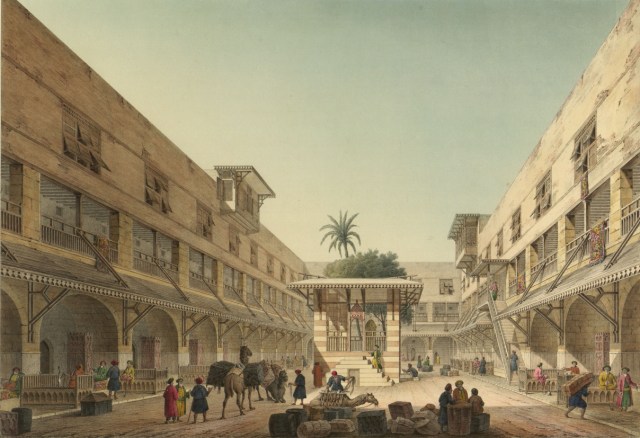
The following short biography is taken from the famed chronicle- which is also a biographical dictionary- of the Ottoman Egyptian scholar al-Jabartī (1753-1825), best-known for his accounts of the French invasion and occupation of Egypt under Napoleon. His chronicle contains numerous fascinating slices of every-day life in the late eighteenth century, such as this entry concerning a person of middling estate (which he made up for, as we will see, in other types of ‘capital’):
Ismā’īl Efendī ibn Khalīl… known as al-Ẓuhūrī al-Miṣrī al-Ḥanafī al-Muktib died. He was a good person, satisfied with his lot in life, who earned his living through book-copying and fineness of calligraphy which he had improved in and reached perfection under the tutelage of ‘Alī Aḥmad Efendī al-Shukrī. He wrote with his fine handwriting numerous books (kutub), copies of al-Saba’a al-munjiyyāt [seven selected Qu’ran suras with reputed prophylactic power], Dalā’il al-khayrāt, and full copies of the Qur’an. He also had a storehouse wherein he sold coffee beans, located in the caravanersai of greens (wikālat al-baql) close to the Khalīlī Khan. He was also very knowledgeable in the science of music, melody, the playing of the ‘ūd, and the composition of poetry, having composed madā’iḥ, qaṣā’id, and muwashshaḥāt.[1] He died, God be merciful to him, in 1211/1796.[2]
The picture that emerges from this brief life is of a man who deliberately cultivated a wide range of skills and forms of cultural expertise, while also participating in the flourishing marketplace of goods and commodities. His enterprises were such that they could overlap: selling coffee beans at the scale suggested here would have only occupied so much time, Ismā’īl otherwise working at what al-Jabartī presents as his primary trade, that of a copyist. Despite sporadic in-roads of moveable print in the eighteenth century Ottoman world, manuscript production remained dominant, with men like Ismā’īl turning out often prodigious numbers of texts for an expanded market compared to earlier periods. His specified repertoire consists of works that households with few other texts might very well have owned, either for reading and recitation or simply for their role as potent conveyors of baraka (and, secondarily perhaps, markers of cultural prestige). It is striking that, like several other copyists profiled by al-Jabartī, the Dalā’il al-khayrāt is given as part of Ismā’īl’s calling card, a text of such popularity that it could form a stable item all of its own regardless of individual customer commissions. Continue reading “A Cultural Entrepreneur in Late Eighteenth Century Cairo”
